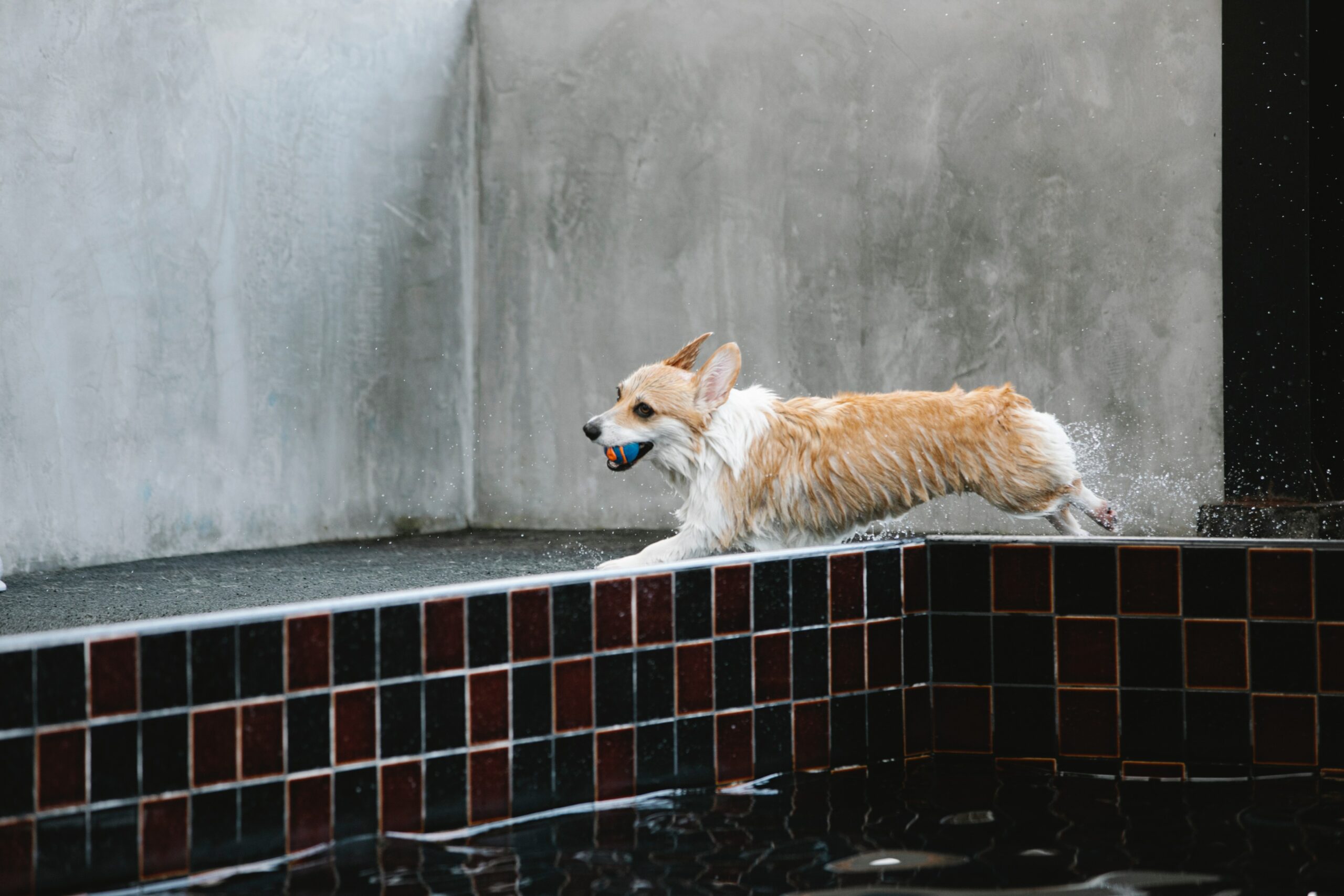If you have watched videos of dogs enjoying a dip in the pool, you might be thinking of doing the same thing with your canine companion.
However, there are several things you need to know before you let your dog in the pool. This statement is especially true during the cold months when you may want to winterize your pool. After all, there are pros and cons, plus safety and health concerns associated with letting your dog into the pool.
This guide will help you decide whether you can let your dog on the poll and if there are things you need to prepare to ensure everything is in order.
Should You Let Your Dog Swim in the Pool?
Dogs, like humans, require physical activities like exercise to remain healthy. Swimming is an excellent form of exercise that can improve your dog’s cardiovascular system and develop its muscles. Furthermore, this activity can also help develop the joints and limbs of puppies. They also help dogs rehabilitate from a procedure to regain their usual playfulness.
Swimming in the pool is also a low-impact, total-body workout alternative for your dogs. Sometimes, it can be a great alternative to walking and running exercises for your dogs. But like every other exercise, your dog must slowly get accustomed to this activity through short and gradual sessions.
Furthermore, dipping in swimming pools is also an excellent way for your pup to cool off during summer.
Is Pool Water Safe For Dogs?
Pool water is generally safe for dogs. However, not all breeds of dogs know how to swim instinctively, which could pose severe risks to your canine companion.
Unlike natural bodies of water like lakes or rivers, pools are more complex for dogs to get in and out of because of how their walls are designed. Furthermore, the gentle slope from the shallow end into deeper waters is uncommon in swimming pools. They frequently use steep steps for entry and exit, which can be challenging for any dog to navigate.
Some dogs have short legs and barrel-shaped bodies that aren’t ideal for swimming. Hence, it’s best to leave them to play in shallow waters, but don’t let them into swimming pools without supervision. Furthermore, you should only let poor swimmer dogs into the water briefly. Below are some of the dog breeds that are known as the worst swimmers:
- Basset Hounds
- Boxers
- Bulldogs
- Bull Terriers
- Corgis
- Dachshunds
- Pugs
- Shih Tzus
- Siberian Huskies
In contrast, some dogs are good at swimming because they are generally long and have strong limbs. Some dogs were even bred for hunting purposes and were tasked to retrieve waterfowl and ducks on the water. Some of the dog breeds which can swim very well include:
- English and Irish Setters
- Golden Retrievers
- Chesapeake Bay Retrievers
- Labrador Retrievers
- Spanish and Portuguese Water Dogs
- Newfoundlands
How Dogs Can Affect Your Pool
Dogs can significantly impact your pool’s water balance and can quickly raise its pH level. Furthermore, they absorb more chlorine in the pool and can introduce more contaminants into the water.
A dog’s fur traps dirt, bugs, dander, pests, and fecal matter. These particles can easily contaminate the pool’s water and may even lead to diseases that can be transmitted to recreational water. You must watch out for diseases like Cryptosporidium, E.Coli, Giardia, and Hepatitis.
Some dog breeds usually shed more hair than others, especially those with long or double coats. This hair can easily block the pool’s filter and other essential equipment. Depending on your pool setup, letting your dog into the pool can create specific problems with the functionality and longevity of your pool.
If you let your dog swim in the pool, make sure to regularly check your pool equipment and ensure that the pump and filter don’t have any dog hair clogging them. Refer to your pool design plans to check if your pool has any vulnerabilities.
Dog Pool Safety Tips
Keeping your dog safe when in the pool should be one of your priorities. Don’t let your dog swim without supervision; they belong to poor swimmer breeds.
Furthermore, you need regular water testing to ensure the pool’s water is clean and free from contaminants. You should conduct these tests at least every two weeks and more frequently during summer when the pool is used more frequently.
Perform regular pool maintenance to ensure that the recreational water doesn’t have E. Coli and other harmful pathogens. Use EPA-approved sanitizers such as chlorine and follow their pH level recommendation. Routinely check your water’s chlorine levels, so it doesn’t lose its ability to eliminate germs and other harmful micro-organisms.
Finally, you can install dog ramps in your pool to help your dogs exit the pool safer and much more accessible.
Conclusion
Letting your dog into the pool is generally safe if you regularly maintain your pool and are there to supervise your canine companion.
photo credit: Photo by Blue Bird: https://www.pexels.com/photo/fast-purebred-dog-running-with-ball-on-poolside-7210308/
Love our content? Share it with a friend or link it to social media. Like short clips of cute household pets? Training tips? Follow us on instagram @nydognanny or on YouTube at nydognanny. Have some news you needs to get to dog and cat parents stat? Email info@newyorkdognanny.com with your article pitch.




